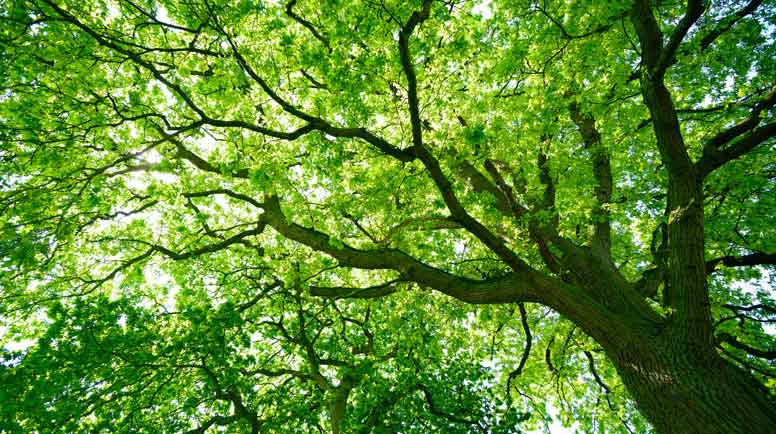PRUNING THROUGH THE LIFE OF A TREE
Here are four reasons to prune
For trusted expertise and superior results,
find a landscape professional near you.

It is time. You’ve decided to bring that empty corner of your yard to life with a colorful tree or determined you can no longer bear the watchful eyes of nosy neighbors and intend to plant a tree for privacy. It may be an easy decision to add a tree to your landscape but with several hundred types of trees in North America, it can be overwhelming to figure out what kind to plant. When it doubt, ask a landscape professional for help and use the following four factors to help you choose the right tree for the right location in your yard.
Height
When considering what kind of tree to plant, walk to where it will go and look up. Are there power lines overhead? Are there other tall trees that the new tree may conflict with as it grows? If there are no issues there, think about how the tree will impact the view as it grows to full size. Most shade trees have a spreading canopy on top of a much narrower trunk, so the views aren’t impacted as much at the ground level. However, many evergreens have branches all the way to the ground, which may mean that everything behind them disappears. While that might seem like an attractive option if you are trying to provide a barrier to an unsightly area or create privacy, it’s less desirable if you want to keep on open look within the landscape or if you’d like to admire the full expanse of your lawn.
Width
The eventual width of a tree is a tremendously important consideration that can’t be overstated. Have you ever driven down the street and seen a house that looks like it’s being devoured by a large evergreen? In all likelihood the homeowner who planted it thought it was a beautiful specimen, when it was small and in a container at the nursery. Sadly, they didn’t read the tag or research the size at maturity. A tree will grow in an attempt to reach the size it’s meant to be. Picking the right tree for the right place is much better than fighting nature.
Canopy
When selecting a shade tree, it’s important to consider what the canopy will be like. The canopy is the layer of leaves and branches that cover the ground when viewed from above. Will you have light shade, dappled shade, or dense shade? How will the canopy combine with the canopies of nearby trees? The canopy that is created may change how your outdoor space functions. It’s also important to consider any buildings or structures with which the canopy may conflict. These canopy questions are all important considerations when selecting a tree.
Debris
Even the amount of debris a tree drops can have implications for how you use your backyard. Some trees have slender, fragile tips to their branches that come down in the lightest wind. Some trees drop seed pods, fruits, or nuts. Some of the droppings are sharp or uncomfortable to walk on and others create extensive debris that requires frequent clean up. Be sure to do your homework, because what goes up must come down.
Planting a tree is among the best, low cost investments you can make in your property. Trees clean the air, prevent erosion, help cool the landscape, and they’ll even increase your property’s value. To make sure you can reap the benefits trees provide, make your planting selection wisely so you don't end up as a “don’t example” with a tree that takes over your landscape or adds too much shade for your lawn.
We recently updated our Privacy Policy. By continuing to use this website, you acknowledge that our revised Privacy Policy applies.